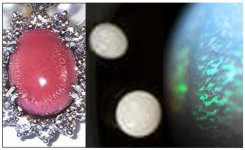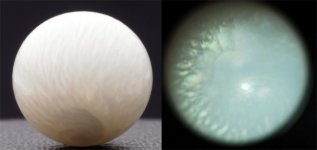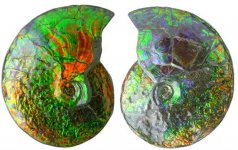DrTKStern
Natural Pearl Connoisseur
The Unknown
The Unknown
Hi, All,
I have both kinds...i.e. Nautilus and Tridacna of all varieties, plus multiple examples of various certified marine gastropods... and side-by-side, they do not look the same as Nautilus. Beyond my certified Nautilus pompilius pearl, you are going to see something that is the first and only one of its kind known.
What is the greatest feeling? To be sailing the Celebes Sea in a tiny craft at night, wife beside you, with phosporescent wake, balmy air, drums pounding out warnings on nearby atolls, armed to the teeth among trusted men, hoping for pearls to be found at sunrise, spotting our men who have been diving at night, and having them extend a hand full of treasure, toothless smiles hungry for rewards. Ah! That is living! A man can only die once.
Datu Tom
The Unknown
While I was away, you went full tilt on nautilus pearls. I saw one of Jeremy Norris's tridacna squamosa pearls in person on Saturday and it had the flame "ring of fire". I have to admit that they do look very similar to the nautilus pearls.
I'm sure that Ken will have the definitive answer and we can all ponder and debate to our heart's content when the monograph is released. I know some of you are frustrated, but I think we are lucky to see one of nature's last mysteries unfold in our time. This is fun!
Cheers,
Blaire
Hi, All,
I have both kinds...i.e. Nautilus and Tridacna of all varieties, plus multiple examples of various certified marine gastropods... and side-by-side, they do not look the same as Nautilus. Beyond my certified Nautilus pompilius pearl, you are going to see something that is the first and only one of its kind known.
What is the greatest feeling? To be sailing the Celebes Sea in a tiny craft at night, wife beside you, with phosporescent wake, balmy air, drums pounding out warnings on nearby atolls, armed to the teeth among trusted men, hoping for pearls to be found at sunrise, spotting our men who have been diving at night, and having them extend a hand full of treasure, toothless smiles hungry for rewards. Ah! That is living! A man can only die once.
Datu Tom




